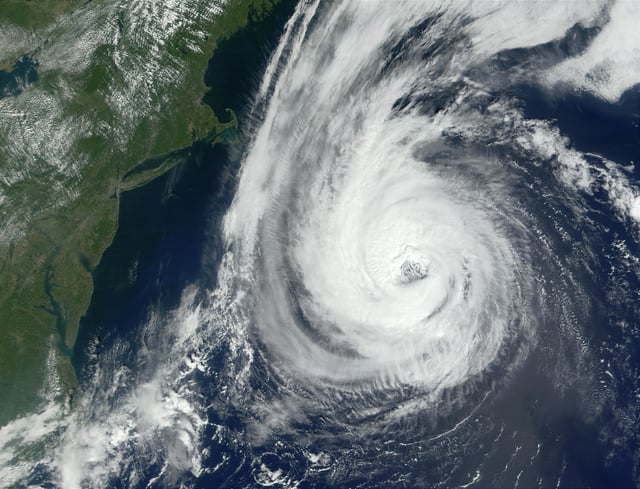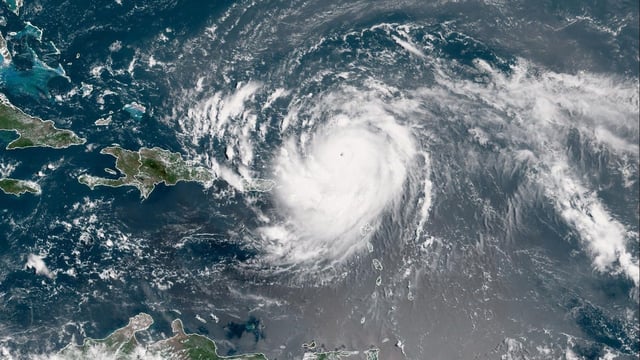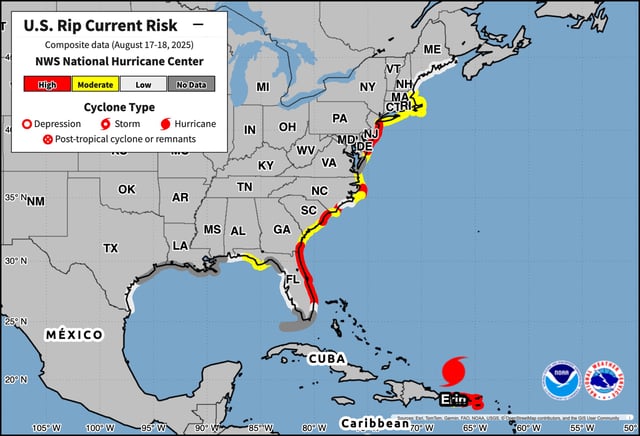Overview
- Erin’s eyewall replacement cycle drove its sustained winds down to 125 mph north of Puerto Rico, but sea surface temperatures and low wind shear leave room for re-strengthening.
- Reconnaissance and satellite data show tropical-storm-force winds now reaching over 200 miles from Erin’s center, expanding rough-sea conditions across the western Atlantic.
- Outer rainbands have triggered flood watches and flash-flood warnings in Puerto Rico and the U.S. Virgin Islands, where isolated downpours of up to 8 inches have been reported.
- Tropical storm warnings for the Turks and Caicos and watches for the southeast Bahamas remain in effect as Erin tracks northward offshore of the Caribbean.
- Forecast models keep Erin curving between Bermuda and the U.S. East Coast, though uncertainty over an approaching trough in Atlantic Canada could nudge its impacts farther north.



